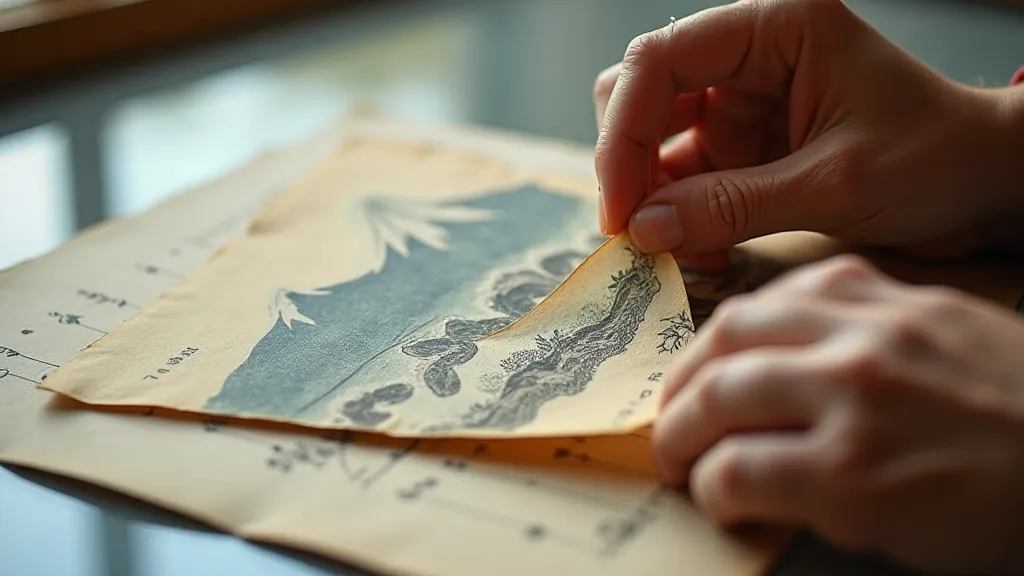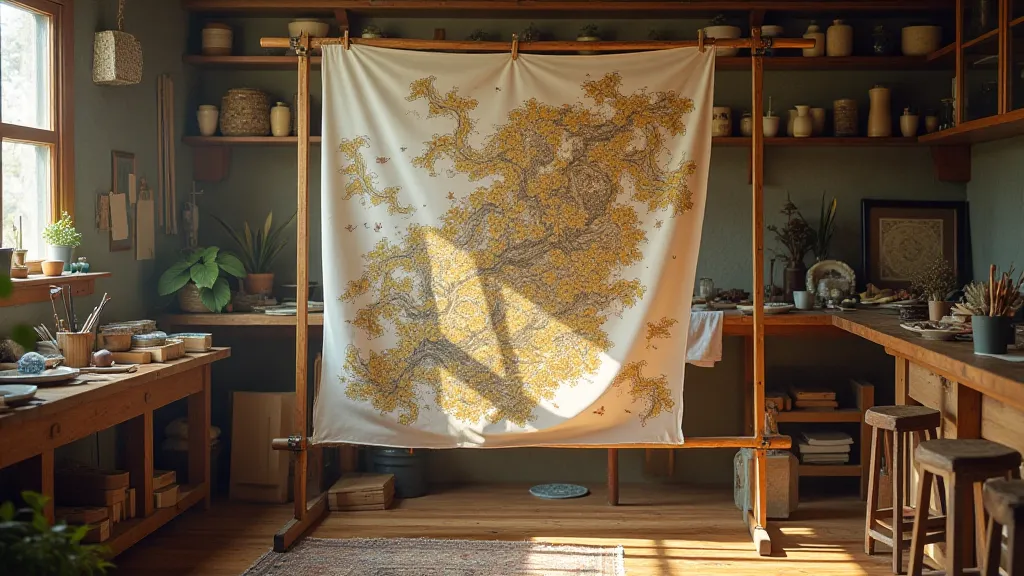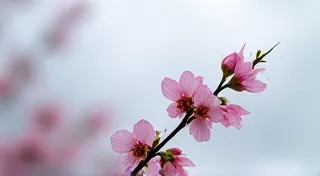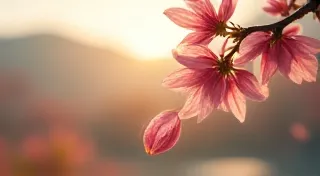Resonance and Repetition: The Rhythmic Language of Mokuhanga
There's a particular resonance you feel when holding something truly old – a feeling that transcends the mere physicality of the object. I often think of it while handling antique accordions. The weight of the wood, the aged bellows, the faint scent of time… it's a palpable connection to the hands that crafted it, the music it produced, and the lives it touched. That same feeling pervades Japanese Mokuhanga woodblock printing. It’s more than just creating an image; it’s participating in a long, unbroken lineage of artists who found beauty and meaning in deliberate repetition and gentle variation.
Mokuhanga, meaning “wood picture printing,” is a unique and mesmerizing form of Japanese art. While often grouped with other woodblock printing techniques, it possesses distinct qualities – notably, the use of water-based inks and a softer key block that allows for subtle gradations and a characteristic “flocculent” texture. This isn't the sharp, crisp woodcut of Europe; it's a softer, more atmospheric approach, deeply entwined with the aesthetics of Ukiyo-e, the "pictures of the floating world," but retaining a profound difference in feel and process.

The Harmony of Repetition
At its heart, Mokuhanga embraces repetition. Not merely copying, but building a complex harmony through the echoing of forms, colors, and textures. Consider the iconic depictions of Mount Fuji in the works of Hokusai. While each print is unique, the repeated contours of the mountain, the rhythm of the waves, and the subtle gradations of color contribute to a feeling of vastness and tranquility. This isn’t accidental. The deliberate layering of blocks, each responsible for a single color or tonal value, creates a cumulative effect that transcends the sum of its parts. The careful consideration of how these elements interact, and how the overall image breathes, demonstrates a profound understanding of visual balance – a principle that extends far beyond the realm of Mokuhanga and influences design across cultures and time.
This focus on repetition isn’t about monotony. It’s about finding nuance within constraint. The artist isn’s striving for photographic realism. Instead, they're seeking to distill the essence of a subject, to capture its underlying spirit through a simplified, rhythmic language. Think about the patterns of bamboo, the graceful curves of cherry blossoms, or the swirling patterns of water – these are recurring motifs in Mokuhanga prints, rendered with a sensitivity that highlights their inherent beauty. This consistent return to core elements creates a framework for the viewer’s eye to settle into, promoting a sense of meditative calm. The artist seeks to guide the viewer's gaze, establishing a visual flow that emulates the natural rhythms found in the world around us. This is where the understanding of how ink itself behaves becomes critical, impacting how forms bleed and blend, ultimately informing the visual poetry of the work. It’s a dance between control and surrender, demanding a deep awareness of the materials and their properties.
Craftsmanship and the Passage of Time
The creation of a Mokuhanga print is a laborious process, demanding immense skill and patience. Each block must be meticulously carved by hand, often from soft cherry wood. The process starts with the key block (omohan), which acts as a registration guide for the other blocks. Subsequent blocks are then carved, carefully aligned, and printed one after another. The water-based inks, unlike the oil-based inks used in Western printmaking, create a softer, more translucent print with a distinctive texture. The "snow effect," created by the inks drying on the woodblocks, results in a uniquely flocculent appearance that is difficult to replicate. This isn’s simply about applying pigment; it’s about understanding how the ink’s viscosity and drying time interact with the wood’s grain and the paper’s absorbency. The artist must become intimately familiar with these variables to achieve the desired effect, influencing the visual atmosphere of the final print. The entire process represents a holistic engagement with the art form, much like a musician understanding the resonant qualities of their instrument.
Handling antique Mokuhanga prints is akin to holding a piece of history. The delicate paper, the subtle imperfections in the ink, the faint marks of the carver's tools – all these tell a silent story. Restoring a Mokuhanga print is a delicate undertaking, requiring an understanding of the materials and processes involved. Often, the best approach is to simply stabilize the print, preserving its integrity without attempting to "correct" its age. A slight discoloration, a small tear, or a faint smudge – these are all part of its story, bearing witness to the print's journey through time. The choices made by the restorer, too, become part of the print’s history. The very nature of preservation necessitates an awareness of the ephemeral quality of art, mirroring the transient beauty found in nature – a concept deeply embedded in Japanese aesthetics.
The Restoration Mindset: Respecting the History
Collecting antique Mokuhanga can be a fascinating and rewarding pursuit. Finding well-preserved prints requires patience and a keen eye. Look for prints on supple, strong paper (often handmade washi), and check for signs of insect damage or water stains. The condition of the print significantly impacts its value, but even prints with imperfections can hold immense beauty and historical significance. The true value lies not only in the rarity of the print but also in the story it carries. Often, the artistic choices made aren't about achieving perfect representation but about evoking an atmosphere – a mood that resonates with the viewer. Considering these atmospheric qualities invites a deeper appreciation for the art form, allowing one to understand how the artist uses color and form to create a sense of place and time, much like a poet uses language to conjure vivid images in the reader’s mind. It’s about understanding the principles that guide artistic expression, a subject explored in greater depth when considering how artists approach their craft, as discussed further in The Breath of the Brush: Incorporating Calligraphic Sensibility.

The mindset of a restorer, or even a careful collector, is one of respect. It’s about acknowledging the work of the carver, the printer, and the passage of time. It’s about appreciating the imperfections that mark the print’s journey and preserving its story for future generations. It’s not about chasing a pristine, idealized image; it’s about cherishing the authenticity of a piece of art that has lived and breathed for centuries. Trying to eliminate all signs of age is akin to erasing a chapter from a beloved book – the journey and its wear are as integral to the overall experience as the narrative itself. The nuances of ink behavior are as important as the subject matter, and understanding these elements contributes significantly to the print’s overall charm. Examining the ways in which artists use color to convey emotion and create depth is a study in itself, and the principles involved can be applied to various artistic disciplines.
Finding Resonance Today
The principles of Mokuhanga – the embrace of repetition, the pursuit of harmony, and the appreciation for craftsmanship – remain profoundly relevant today. In a world saturated with fleeting images and manufactured perfection, the quiet beauty of a Mokuhanga print offers a welcome respite. The rhythmic patterns, the subtle gradations of color, and the tactile texture invite contemplation and offer a sense of connection to something larger than ourselves. The careful consideration of how ink flows and interacts with the paper is an exercise in observation, a constant reminder of the interconnectedness of all things. Much like a river carving its path through the landscape, the ink’s journey across the paper reveals a story of movement and transformation. This concept of flowing forms is beautifully explored in The River of Ink: Mapping Flow and Form in Mokuhanga Design, offering insights into how artists harness the unpredictable nature of the medium.
The deliberate slowing down required to carve each block and meticulously print each layer encourages a mindful approach to creativity. There’s a powerful lesson here – that beauty can be found not in the pursuit of novelty but in the careful refinement of established forms. And, just like holding that antique accordion and feeling the echo of the hands that crafted it, looking at a Mokuhanga print is an act of shared humanity, a silent conversation across time. The skillful use of color and form can evoke a range of emotions, from serenity and joy to melancholy and awe. The ability to convey these emotions through visual means is a testament to the power of art. The thoughtful selection of colors contributes significantly to the print’s overall aesthetic impact, much like a composer carefully chooses notes to create a harmonious melody.

Mokuhanga is more than just a technique; it's a philosophy. It's a reminder that true beauty lies not in perfection but in the enduring power of human creativity, resilience, and the beauty of repetition. The deliberate choices made by the artist reflect a deep understanding of the medium and a profound respect for tradition. The overall impression is one of quiet elegance and enduring appeal, reflecting a timeless aesthetic that transcends cultural boundaries. Exploring the broader spectrum of artistic choices, including those related to color palettes, is explored further in Chromatic Resonance: The Palette as Portal to Atmosphere in Mokuhanga, which delves into the evocative power of color in Mokuhanga prints.
The influence of nature is woven throughout Mokuhanga, inspiring artists to capture the essence of the natural world in their prints. The rhythmic patterns found in nature, such as the flow of water or the growth of plants, are reflected in the prints’ repetitive forms and patterns. This interconnectedness highlights a key philosophical principle in Japanese art, emphasizing the importance of harmony and balance. Understanding the artist's inspiration and the underlying principles that guide their creative process is essential for fully appreciating the beauty and significance of their work.





